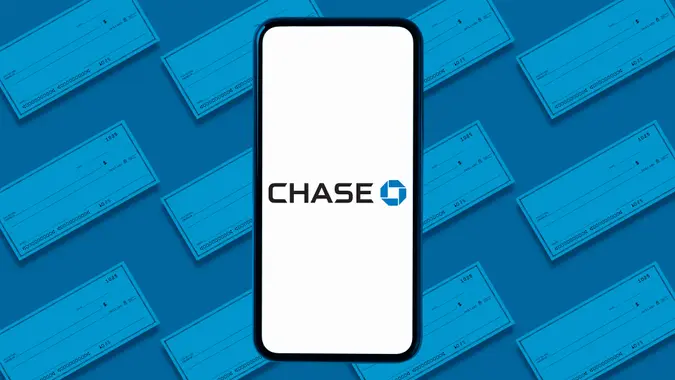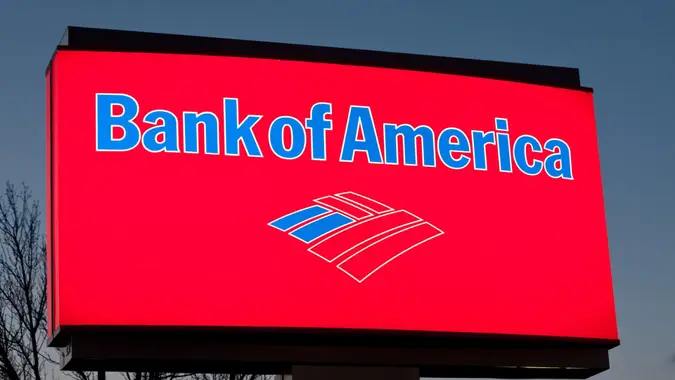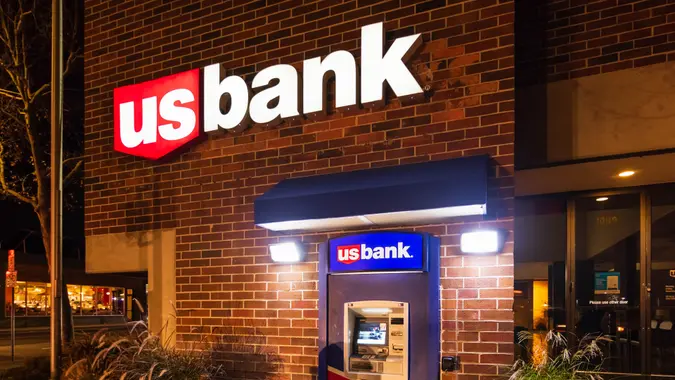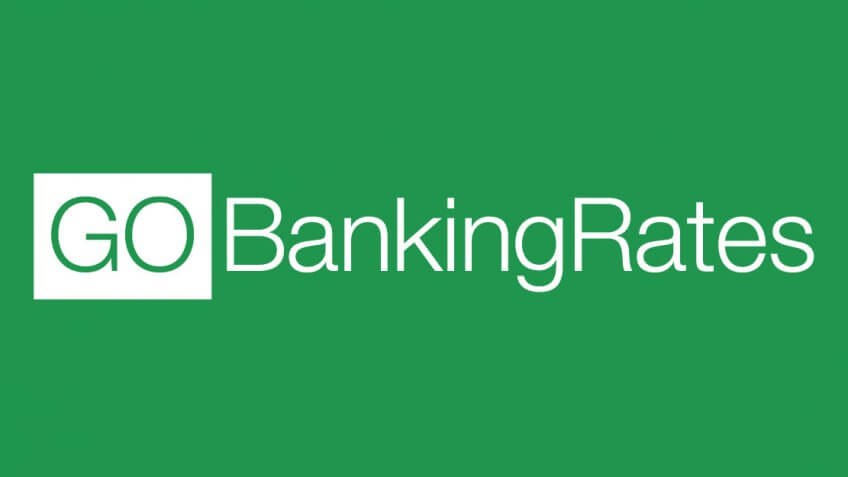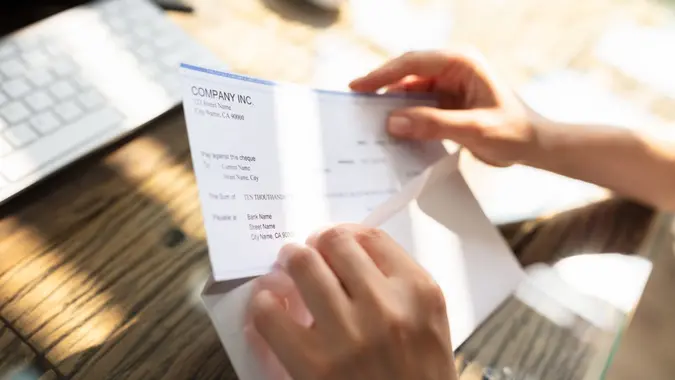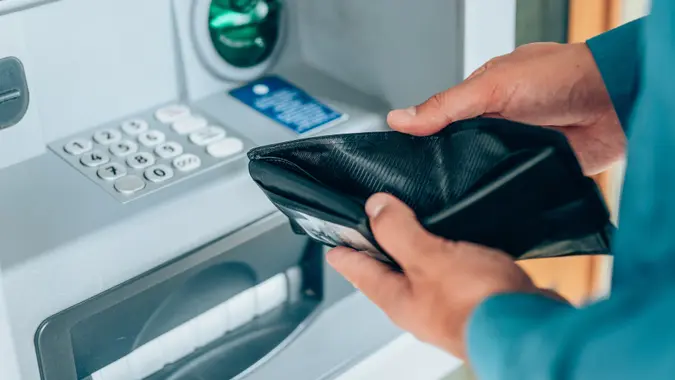Fraud Alert: What Are You Doing to Keep Scammers Out of Your Checking Account?

Commitment to Our Readers
GOBankingRates' editorial team is committed to bringing you unbiased reviews and information. We use data-driven methodologies to evaluate financial products and services - our reviews and ratings are not influenced by advertisers. You can read more about our editorial guidelines and our products and services review methodology.

20 Years
Helping You Live Richer

Reviewed
by Experts

Trusted by
Millions of Readers
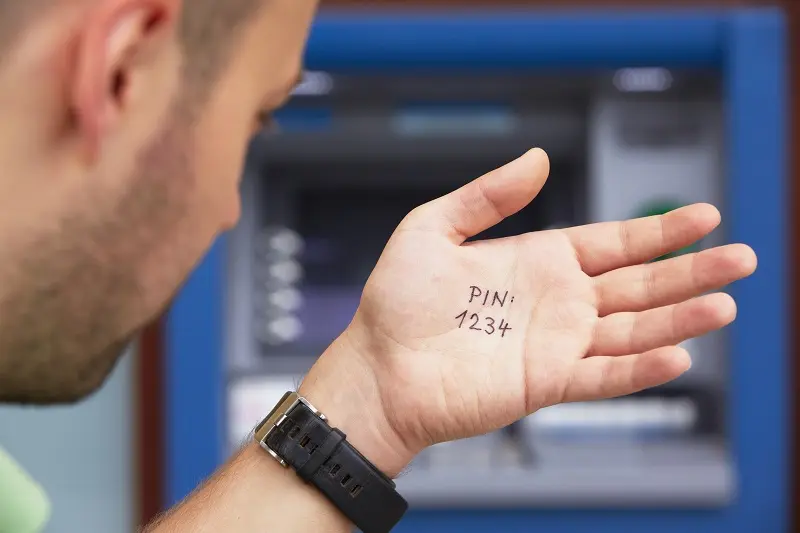
Although a lot of attention is drawn to credit card security and data breaches these days, an often overlooked security concern is checking account security. The rules protecting debit card and other checking account purchases are not as consumer-friendly, meaning if a breach occurs, there might be fewer remedies.
Additionally, with so many points of access to your checking account and with so many people putting more information online, security can be more complex than you might think.
3 Common Bank Account Scams
Thieves and fraudsters can gain access to your checking account through check fraud, ATM fraud, online fraud, elaborate confidence scams and more. Understanding how some of these access points can be both breached and secured is an important first step in protecting your checking account. Below are three of the most common areas of concern for checking accounts and debit cards.
Read: 5 Stupid Ways to Trigger Your Own Fraud Alert
1. Overpayment Fraud
This type of ploy typically involves non-cash payments, such as checks, online transactions or wire transfers and comes in a wide range of variations. The approach might be a fraudster asking you for help cashing a check. Of, if you’re a seller, a fraudulent buyer might give you a non-cash payment for your product or service. Either way, if you cash the check you’re given by a fraudster, it will bounce.
While it might take a few days for the check you received to bounce, the money that you give the crook is immediate and nearly impossible to recover. By the time you realize what has happened, your payment could be gone, and you might be facing additional returned check fees.
2. Fundraising Under False Pretenses
One of the unfortunate realities of frauds that involve checking accounts is that you might be partially to blame by giving out your financial information under false pretenses. Often known as charity fraud or charity scams, this type of checking account theft involves a request for you to donate to a charity for a good cause or for special disaster relief efforts. Once the criminal has appealed to your civic-minded nature, he or she will ask for your banking or debit card information to collect the donation. Once you have turned over your information to the scammer, large withdrawals might occur quickly.
3. ATM Fraud
ATM fraud is as varied as overpayment fraud, and it too has a common theme: debit card theft or a stolen checking account number. With this type of fraud, criminals find ways to obtain your debit or checking account number and personal identification number (PIN) while you’re using an ATM machine. Common methods include false card readers to allow access to an ATM vestibule, hidden cameras near the machine, false facades on machines and others. In all cases, once the perpetrator gets your information, he or she will quickly drain your checking account.
Related: 5 Ways to Protect Yourself From Credit Card Fraud at Gas Stations
How to Protect Yourself From Checking Account Theft
In order to avoid being the victim of these and other types of fraud, there are some specific steps you should take. For example, the Federal Trade Commission (FTC) recommends making sure you know who you are talking to before giving out any banking or financial information.
It also reminds consumers that under the law, a telemarketer will not debit your account unless you have expressly authorized a payment by this method. If you are asked for such information, find ways to verify the legitimacy of the call before providing sensitive information. For example, try finding a callback number to verify that the company requesting your information exists.
Developing solid financial practices is a prudent way to avoid being taken advantage of by criminals. Overpayment scams, for example, can be avoided by asking your bank to verify the check before you make any payments to a third party. In fact, anyone asking you to authorize payment from your account should be verified, including charities and other seemingly helpful organizations. A simple search will reveal if it is a legitimate organization and should provide a contact number to verify common donation practices.
With ATM scams, being vigilant is often enough to avoid a bulk of potential pitfalls. Pay attention to who’s around you, look out for suspicious cameras, and make sure no one else can see you entering your PIN. Avoid writing your PIN on your hand or on a piece paper, and try to opt for email receipts instead of paper receipts.
What to Do If You Become a Victim
Consumer protection for checking accounts is not as strict as it is for credit cards, so paying attention is vital. The central rule to remember here is that you have only 60 days from the date of a given bank statement to report fraudulent activity if you want to avoid full liability. This means that inspecting your account statements and immediately contacting your bank if you notice a problem is the single most important step to take if you are victimized.
The FTC also recommends contacting your state’s Attorney General to report crimes. Finally, while banks have many protections available and in place, availing yourself of new technologies as they become available can make a significant difference.
Keep reading: 5 Signs Your Parents Are the Victims of a Financial Scam
In the increasing transparent world of online communication and transactions, maintaining the security of your checking account is paramount. By taking reasonable precautions, you should be able to lower your risk and avoid the headache of fighting back after the fact.
 Written by
Written by 




